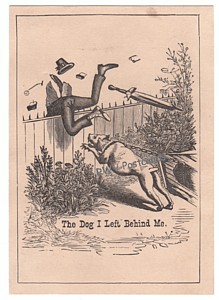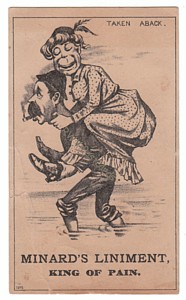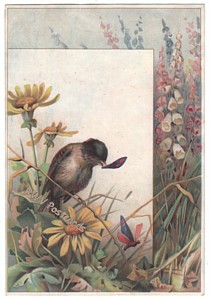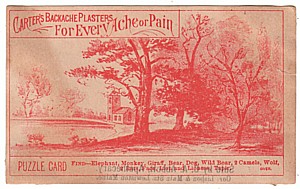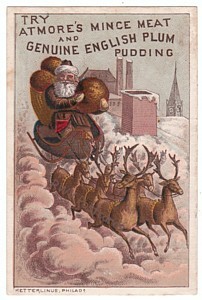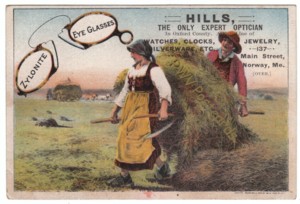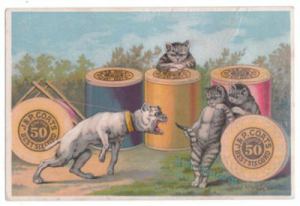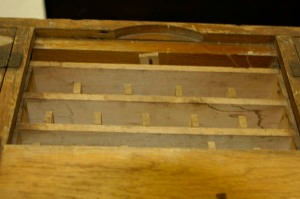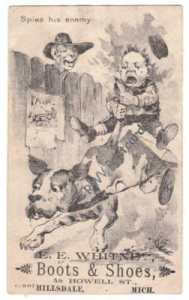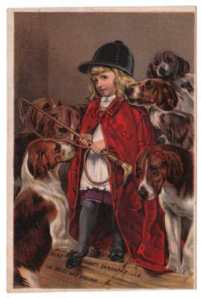
Patent Medicine trade card for Hood's Sarsaparilla made by C.I. Hood & Co. of Lowell, MA
I always read what a medicine claims to “cure” before buying, to ensure I get just what I need and not more. I’m not interested in overmedicating. People living during the late 1800s might’ve had a difficult time following my lead. Read below to see what I mean.
Hood’s Sarsaparilla contains the following ingredients:
Sarsaparilla (or Grandular): perennial trailing vine with prickly stems native to Central America. It is also known as a type of soda.
Yellow Dock: perennial flowering herb used for blood and liver problems, dermatitus, and venereal diseases. It’s powdered yellow roots were thought to’ve medicinal properties, and used as a mouthwash and dentifrice.
Wild Cherry: traditional Native American remedy for respiratory infections and anxiety. It’s primary use over time has evolved into a component of cough syrup.
Dandelion: nutritious food whose leaves contain substantial levels of several vitamins and minerals. The root’s historical use includes the treatment of breast diseases, water retention, digestive problems, joint pain, fever, and skin diseases.
Juniper: Its berries were used to assist in childbirth, treat congestive heart failure, stimulate menstruation (what??), treat gonorrhea (wait, didn’t yellow dock already do that?), and urinary tract infections.
Pipsissewa (or Prince’s Pine): a rare, small evergreen plant growing 3-10 inches tall sometimes used to flavor candy and root beer. It’s leaves and stems act as a diuretic, astringent, and tonic alterative. It is great with cardiac and kidney diseases, chronic rheumatism and scrofula. **MN is one place it’s found.
Stillingia: a strong stimulant to immune cells.
Mandrake: plant often used for medicinal purposes as an anesthesia. If too much is taken, it can cause people to be delirious and have hallucinations.
So, basically Hood’s Sarsaparilla is a flavored, medicinal soda used to treat anything under the sun. Geez, it even sounds like it could CAUSE medical problems; especially if mandrake’s included. So much for not overmedicating.
** If you liked this Victorian trade card blog post on Hood’s Sarsaparilla, please click on either the buttons below or to the lower right. Thank you for visiting!
Read Full Post »


